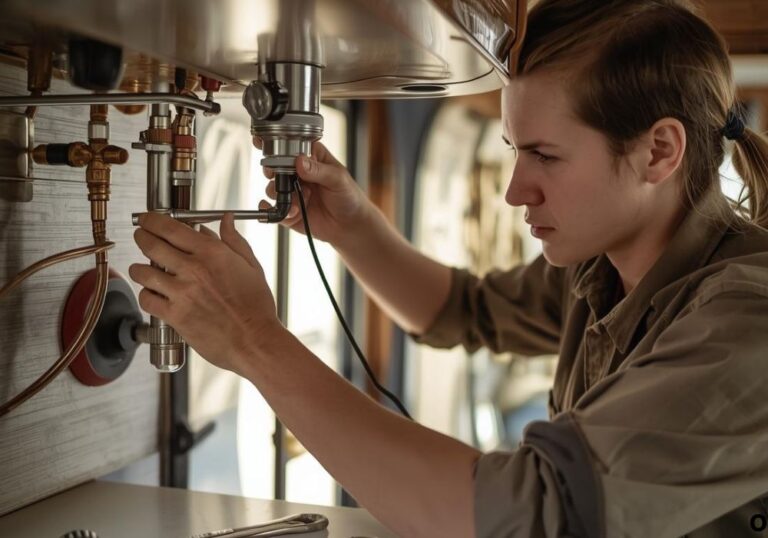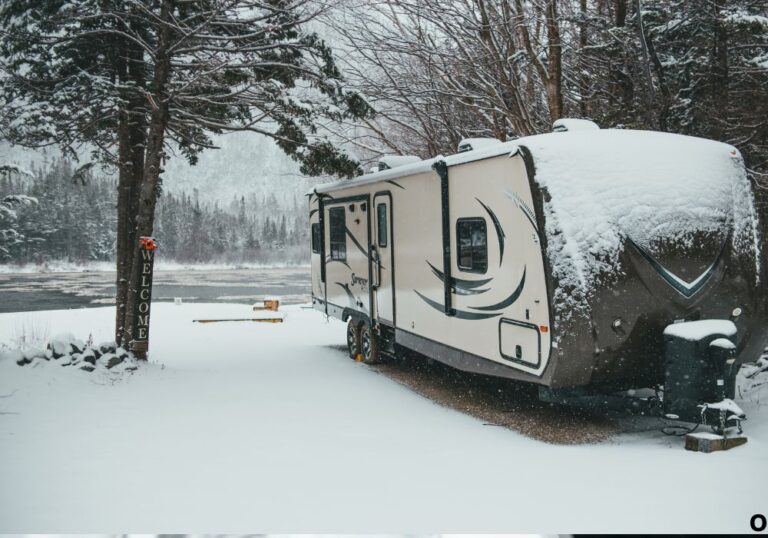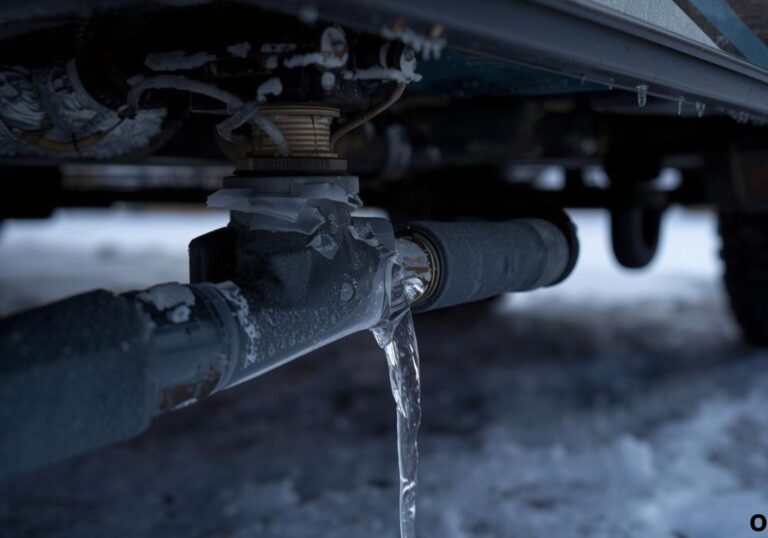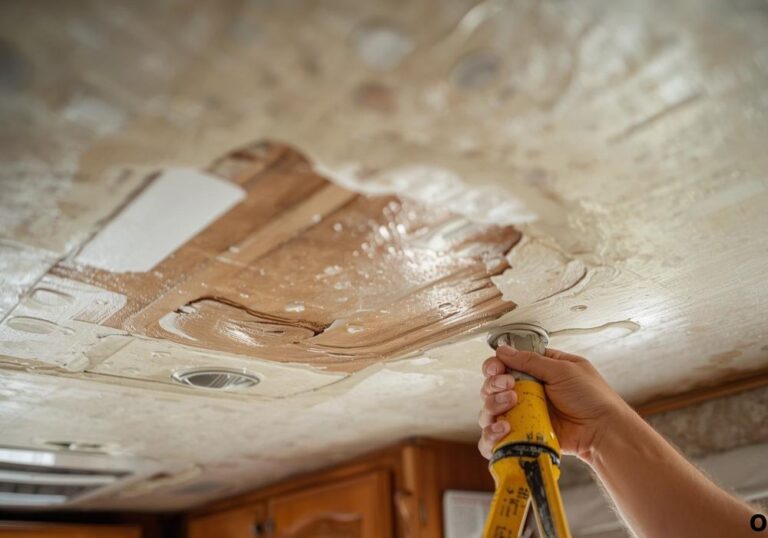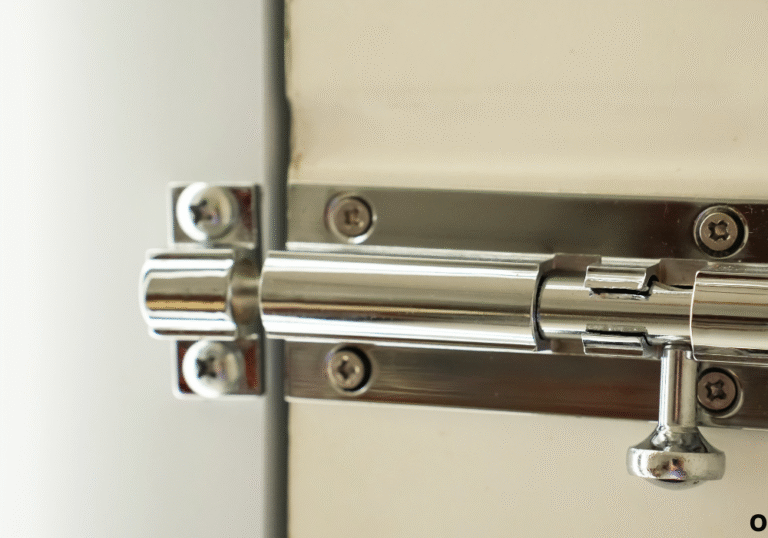DIY Guide to Fix Water-Damaged RV Walls Quickly and Safely
You arrive at your RV campsite after a long drive and notice dark streaks running down the walls. At first, you think it’s a minor stain, but closer inspection reveals soft spots, peeling paint, and bubbling areas in previously solid sections.
Water damage in RV walls is more common than many owners realize. Leaks from the roof, faulty plumbing, or condensation from temperature changes can weaken the wall structure and create an environment for mold growth.
Ignoring small signs of damage often leads to costly repairs. Structural weakening, extensive mold remediation, and long repair times are typical consequences of delayed action.
The good news is that most water-damaged RV walls can be repaired at home with the right tools, materials, and step-by-step guidance. Timely repair restores integrity, prevents further damage, and maintains a safe living environment.
This guide will show you how to identify water damage, understand its causes, gather tools, perform repairs, and implement preventive strategies. You’ll also learn how to handle insulation, patch panels, treat mold, and finish the walls professionally.
By following these instructions, your RV walls will be strong, dry, and protected against future damage. Preventive care and proper repair techniques ensure a safe and comfortable interior for your travels.
Signs Your RV Walls Are Water-Damaged

The most obvious signs include visible stains and discoloration. Brown, yellow, or dark streaks indicate water intrusion over time.
Soft or sagging panels are another clear indicator. Even small areas of give when pressed suggest underlying damage to insulation or support studs.
Peeling paint and bubbling are common symptoms. Water trapped beneath paint causes bubbles and an uneven surface that worsens if left untreated.
Musty odors often accompany water damage. Mold or mildew can develop inside wall cavities, producing a strong smell that signals a deeper problem.
Warping, cracking, or holes may appear in affected areas. Water exposure weakens the wall material and can compromise structural stability.
Small patches of visible mold or streaks on the wall surface indicate active fungal growth. Addressing these areas promptly prevents health risks and structural deterioration.
In some cases, water may migrate along electrical wiring or plumbing lines, causing hidden damage. Regular inspections help catch these issues early before they spread.
Early recognition of these signs ensures timely repair. Ignoring subtle symptoms often results in more extensive damage and higher costs.
Common Causes of Water Damage in RV Walls
Roof leaks are a primary culprit behind wall water damage. Seams, vents, skylights, and AC unit mounts often allow water to seep downward into the walls.
Faulty plumbing can cause hidden leaks behind panels. Pipes from bathrooms, kitchens, or water heaters can crack or loosen over time.
Condensation is another frequent cause. Temperature fluctuations inside the RV create humidity that can saturate insulation and weaken wall panels.
Leaking windows, vents, or doors also contribute to wall damage. Even minor gaps or cracked seals can lead to prolonged water exposure.
Aging wall materials may crack, warp, or lose integrity. Old plywood, paneling, or composite materials are more susceptible to water infiltration.
Neglecting minor leaks allows problems to escalate. Small drips can damage insulation, promote mold growth, and compromise structural support.
Environmental factors, such as heavy rain, hail, or snow accumulation, exacerbate leaks. Timely inspection after storms reduces the risk of hidden damage.
Understanding these causes allows you to implement permanent solutions. Addressing the root problem prevents recurring water damage.
Tools and Materials Needed for Wall Repair
Successful repair requires proper tools. You will need a utility knife, putty knife, drill, screwdriver, and sandpaper.
Replacement materials include wall panels or drywall, insulation, and waterproof sealant. Screws, primer, and matching paint are required to complete the repair.
Safety gear is essential. Gloves, goggles, and a mask protect against mold, debris, and chemical exposure during the repair process.
Optional tools include moisture meters, cleaning brushes, and mold treatment products. Protective sheets or drop cloths help keep your RV interior clean.
Preparing the workspace is important. Remove furniture, cover floors, and organize tools to streamline the repair process.
High-quality panels, insulation, and sealants ensure durability. Premium materials help prevent future damage and extend the life of your repair.
Attention to detail in preparation makes the repair safer and more efficient. Planning ahead reduces mistakes and ensures better results.
Step-by-Step Process to Repair Water-Damaged RV Walls
Step 1: Carefully remove damaged wall material. Cut around affected areas to avoid enlarging the damage.
Step 2: Inspect the insulation and support studs. Look for mold, rot, or weakened wood that needs replacement.
Step 3: Dry the area thoroughly using fans or a dehumidifier. Treat any mold or mildew with safe cleaning products.
Step 4: Replace insulation if it is damp or damaged. Ensure a snug fit to maintain thermal efficiency and structural support.
Step 5: Install new panels or patch existing walls. Secure them with screws or adhesive, keeping surfaces level.
Step 6: Apply waterproof sealant to seams, edges, and potential leak points. Allow it to dry fully to prevent future leaks.
Step 7: Prime and paint the walls to match existing interior surfaces. Use water-resistant paint for added protection.
Step 8: Test walls for firmness and check for leaks. Monitor performance during the next few trips or after rainfall.
Extra tips: Use clamps for proper panel alignment, sand edges for smooth finish, and inspect hidden corners for residual moisture. Proper execution prevents recurring issues.
Preventing Future Water Damage in RV Walls
Regular inspections prevent leaks before they worsen. Check the roof, windows, plumbing, and vents periodically.
Control humidity inside the RV with vents, fans, or dehumidifiers. Excess moisture accelerates wall deterioration and promotes mold growth.
Seal windows, doors, and roof vents with quality caulking and weatherproofing. Even minor gaps can allow water to infiltrate walls.
Seasonal maintenance is crucial. Inspect the RV before winter or rainy seasons, clean gutters, and repair minor cracks promptly.
Use waterproof coatings or protective panels on susceptible wall areas. This adds an extra barrier against water exposure.
Address minor leaks immediately to prevent escalation. Timely action reduces repair complexity and cost.
Store your RV properly during periods of non-use. Protective covers, awnings, or garages reduce exposure to weather and prevent water intrusion.
Educate all RV users on spotting early signs of damage. Immediate intervention prevents minor issues from becoming structural problems.
Cost Considerations for Repairing RV Walls

DIY repairs are cost-effective but require time and care. Replacement panels, insulation, sealants, and paint are generally affordable.
Professional repairs are faster but more expensive. Labor charges vary depending on complexity and region.
Hidden costs may include mold remediation, structural repair, and replacement of multiple panels. Using high-quality materials minimizes long-term expenses.
Budgeting for preventive maintenance reduces emergency repair costs. Regular inspections and timely replacement of worn components prevent major damage.
Material quality affects both cost and durability. Water-resistant panels and premium sealants ensure long-lasting repairs.
Labor costs vary if hiring a professional for extensive wall replacement. Combining repairs can reduce total costs.
Insurance may cover damage in some cases. Always review your RV insurance policy for water-related claims.
Planning ahead for DIY or professional repair scenarios prevents unexpected financial strain.
Frequently Asked Questions (FAQ)
How can I tell if my RV walls are water-damaged?
Look for stains, sagging, peeling paint, bubbling, musty odors, and visible mold.
Can I repair water-damaged walls myself?
Yes, minor to moderate damage can be repaired with the right tools and guidance.
What tools do I need for repair?
Utility knife, putty knife, screwdriver, drill, sandpaper, safety gear, and optional moisture meters.
Do I need special paint for RV walls?
Water-resistant or RV-specific paint is recommended for durability.
How do I prevent mold after repair?
Dry thoroughly, treat mold, and apply mold inhibitors before sealing and painting.
Why are my walls sagging after water exposure?
Water weakens insulation and support studs, causing sagging panels.
Is professional repair always necessary?
Not for minor damage, but extensive mold or structural issues require professional help.
Can water damage recur after repair?
Yes, if the root cause isn’t addressed or preventive measures are neglected.
How do I inspect hidden areas?
Use a flashlight, moisture meter, or remove panels for thorough inspection.
How often should I check my RV walls?
Before and after each season, and after heavy rain or long trips.
What insulation is best for RV walls?
Water-resistant insulation is preferred to prevent future damage.
Can extreme weather worsen wall damage?
Yes, hail, heavy rain, or snow can exacerbate existing leaks.
Are all RV wall materials the same?
No, they vary: wood, composite, or fiberglass, each with different repair methods.
How do I seal wall seams effectively?
Use waterproof sealant and follow manufacturer instructions for coverage.
What if the damage is extensive?
Hire a professional for structural repair and mold remediation.
Conclusion
Water damage in RV walls can escalate quickly if ignored, but timely inspection and repair make it manageable. Following a systematic step-by-step process ensures durable, safe, and aesthetically pleasing walls.
Using high-quality materials, proper tools, and preventive measures reduces the likelihood of recurring leaks. Regular inspections and proactive maintenance are crucial to preserve your RV interior.
Whether you choose DIY repair or hire a professional, addressing water damage early saves money and protects your RV’s structural integrity. Proper care ensures your walls remain strong, dry, and ready for countless adventures.
With these strategies, your RV walls will stay safe, comfortable, and protected against future water damage. Consistent care and timely repair provide confidence for worry-free travels.
I’m David R. Coleman, the founder, lead writer, and lifelong tool enthusiast behind GarageToolPro.com. With years of experience in automotive repair, woodworking, and home DIY projects, I created this platform to share practical tips, detailed tool reviews, and step-by-step guides that help mechanics, hobbyists, and homeowners get the job done right the first time.

